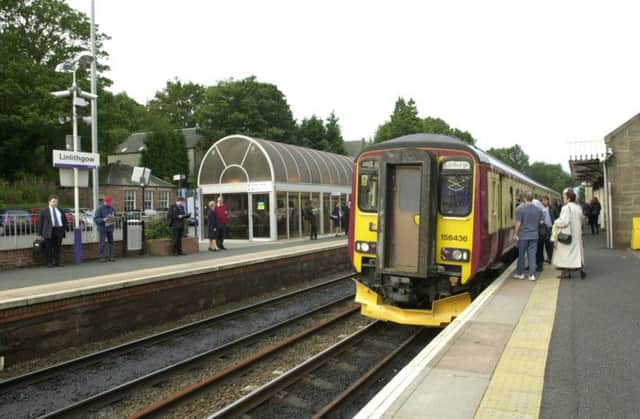Disruption set for Glasgow to Edinburgh rail line


Travellers on the fastest route between the cities will have to change trains, adding significantly to journey times.
The disruption is caused by the closure of the Winchburgh tunnel in West Lothian from 13 June to 27 July, as Scotland on Sunday was first to report.
Advertisement
Hide AdAdvertisement
Hide AdBut details have now emerged for the first time about how commuters will be affected by the work, which is part of a £750 million project to electrify the line for faster and greener trains.
Commuters between Edinburgh and Glasgow will have the option of switching to one of the three other routes between the cities – but journeys take around 50 per cent longer.
Trains on the main line run every 15 minutes and carry millions of passengers a year.
Travellers between Dunblane, Stirling and Edinburgh will be diverted via Dalmeny, near South Queensferry. This will involve trains having to reverse at a junction.
Rail campaigners said disruption could have been reduced if a new section of track – the “Almond chord” – had been built first to avoid that.
Roderick McDougall, vice-chair of Railfuture (Scotland), said: “This is almost exactly what we had feared, despite assurances to the contrary. This disruption is totally unnecessary and could be avoided if the Almond chord were to be built first.
“The logic of closing the tunnel and causing such disruption to Scotland’s flagship rail service before building the chord, which we are told will still be built in the future, eludes us.”
Official watchdog Passenger Focus said commuters must be given full information about the changes.
Advertisement
Hide AdAdvertisement
Hide AdPassenger manager Robert Samson said: “Passengers need to know the alternatives.
“If possible, the other routes should have more frequent services, longer trains and additional or more visible staff to assist them with unfamiliar journeys.”
ScotRail confirmed trains would run between Glasgow Queen Street and Linlithgow, where passengers would have to change to another train or a replacement bus to/from Edinburgh.
Business planning director Jerry Farquharson said: “We’ve sought to balance the needs of a very large number of passengers who use these routes.
“This is the fairest solution and keeps more people on trains.
“People who travel end-to-end between Glasgow and Edinburgh have three alternatives by train, whereas passengers who travel between Stirling or Dunblane and Edinburgh have no rail option, so maintaining these services was a really important factor in our planning.
“We will be adding carriages where possible to reduce the impact on customers, but most journeys will take longer.”
A spokeswoman for the Scottish Government’s Transport Scotland agency said: “These works represent a major milestone being reached on the Edinburgh Glasgow rail improvement programme and have been scheduled to go ahead during the quietest time of year on the railways.”
Advertisement
Hide AdAdvertisement
Hide AdA Network Rail spokesman said: “This project requires the closure of the tunnel to allow for the safe delivery of major track- lowering works that will provide the required headroom for the electrification of the line.”
FOLLOW US
SCOTSMAN TABLET AND MOBILE APPS